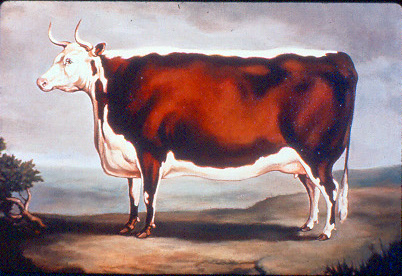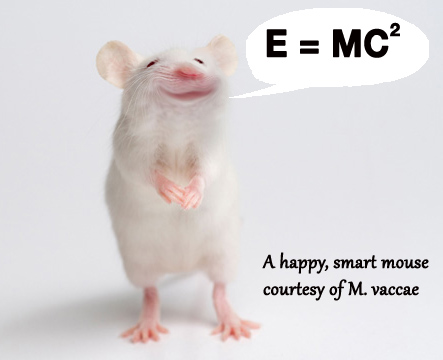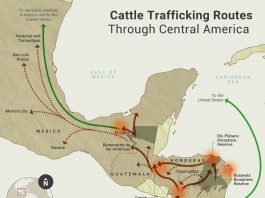
How did we get to the cattle we have today? Where should we go from here? These are some of the questions Dr. Harlan Ritchie worked to provide answers to in his long and distinguished career at Michigan State University. In this series, we’ll share pictures and history that he put together. We hope it gives you some food for thought as you consider what you want out of the cattle you raise.
Attempts to improve cattle started in the British Isles in the mid–1700’s when farmers began recording ancestry and developing local breeds. The same occurred later on the continent of Europe. Early European cattle were used primarily for draft and milk. They were extremely large-framed, late-maturing, light-muscled and slow to finish. When they went to market at 3-5 years of age, they were very rough and patchy.
The early British breed improvers set about to reduce frame size, hasten maturity, increase thickness of fleshing and the ability to finish at a younger age and lighter weight. This trend continued until the late 1950’s. Since a picture is worth a thousand words, here’s a look at the transition starting in 1742.
From 1742, here is “Silver” cow, mother of the Hereford breed.

From 1801, a Herefordshire bull.

From 1806, this is “White Heifer that Traveled.” She was a freemartin (a barren cow) and when slaughtered at 10 years of age she had a live weight of 2800 pounds and a carcass weight of 1820 pounds.

This is “Cotmore” the Champion Hereford bull at the first English Royal Show in 1839. Here he’s 3 years and 10 months old. He was 3920 pounds at maturity, and extremely large, but appeared to have more “shape” than earlier British cattle.

Black Prince is an Angus steer that was the Champion at the prestigious Smithfield show at four years of age. Weighed 2200 lb. It was said, “a short man would need a ladder to see his back.”

Sir Hungerford was the first prize 3-yr-old Hereford bull at England’s Royal Show in 1868. This is the oldest actual photograph of an animal that we are aware of. Photography was in its infancy. There was a significant type change at the 1868 Royal Show from extremely large-framed, rough cattle to smaller-framed, smoother-finished cattle with more “shape” and “balance” to them. This bull epitomized the change.

This 1870’sphoto shows a group of Angus replacement heifers in the “Kinochtry” herd in Scotland. These heifers were obviously still quite large-framed. However, Kinochtry was not a herd that followed the show trends of the day.

This is an etching of the Champion steer at Smithfield in 1882. He was a 2-yr-old and weighed 2000 lb. In 1802, 80 years earlier, the Champion Smithfield steer had weighed 3000 lb., so the size of market cattle had been reduced by about one-third at this point.

These two photos were taken in 1884 at the dispersal of the famous “Stocktonbury” Hereford herd in England.In the center of the second photo is “Lord Wilton,” an 11-yr-old sire, who left a tremendous mark on the Hereford breed. And if you were thinking that some of the artists in the previous pictures just weren’t very good at drawing cattle, note how much Lord Wilton looks like the Champion Smithfield steer just above.


“The Black Knight” was the champion bull at the Highland Angus Show in 1883 and 1885. This photo definitely shows that the leading British breeders were becoming successful at reducing frame size, hastening maturity and changing the shape of their cattle. You can still see the short legs and big bodies of past cattle as well.

Born in 1886, this Angus female, Miss Pretty,” owned by Queen Victoria, was Champion at the Highland Angus Show in 1892. Her conformation would be reasonably acceptable today.

In the United States
Like their contemporaries in the British Isles, the early cattle in the Americas were utilized primarily for milk and draft. They were used for meat only when they were too old to work or produce milk. During the mid-1800’s, the Western range cattle industry evolved from descendants of Spanish Longhorn cattle that had crossed the Rio Grande from Mexico. The range cattle population increased dramatically prior to and during the Civil War. The great trail drives that sent cattle from the Southwest to Kansas railheads and from there to Eastern markets started after the Civil War. Americans acquired a taste for beef which was consumed in steadily increasing amounts until the late 1970’s.
Dual-purpose (milk and meat) Shorthorn bulls were first used to improve native Longhorn cattle on the range. Hereford bulls took over in the late 1870’s; Angus came later. Shorthorn, Hereford and Angus breed associations were formed during 1881–1883; Polled Hereford in 1900.
Here’s a scene in the Southwest U.S. from the late 1870’s or early 1880’s. These cattle were sired by Hereford bulls and out of Longhorn cows.

As the post card notes, “The mark of the white-face” on an Arizona ranch in the early 1880’s.

Anxiety 4th was imported from England by Gudgell and Simpson in 1882. He became the most influential sire in the foundation of North American Herefords. He was selected because he was the thickest hindquartered bull they could find in all of England.

“Polson” was the Champion bull at the 1890 Texas State Fair. He was a great Hereford bull that was brought to Texas from Missouri and succeeded in acclimating well to the change in environment.

Salisbury is a bull imported from England. He was the Champion at the 1898 Ohio State Fair and would probably look good today, over a century later.

Changes continued in the 1900s and some of them had disastrous consequences. Here’s the next part in this series.





first met harlan in 1957. A long time friend
I always wondered about the old prints showing the ancestors of present beef breeds, artistic license? good to see confirmation of actual conformation in the photos, and I look forward to seeing evolution in the next stages. Thanxx Kathy
Great article, it would also be interesting to follow the average height of humans along this timeline. I suspect humans are taller on average and maybe the reference point for what was a tall animal has changed?
I just read that the average woman today weighs more than the average 1960s man. Perspective is everything!
Very good article Kathy! You did your research for sure, and thank you! Looking forward to the next installment…!
Thanks, Ben, but it wasn’t me who did the research. It was Harlan Ritchie we have to thank for this. I’m adding the next part now for next Tuesday! 🙂
Comments are closed.